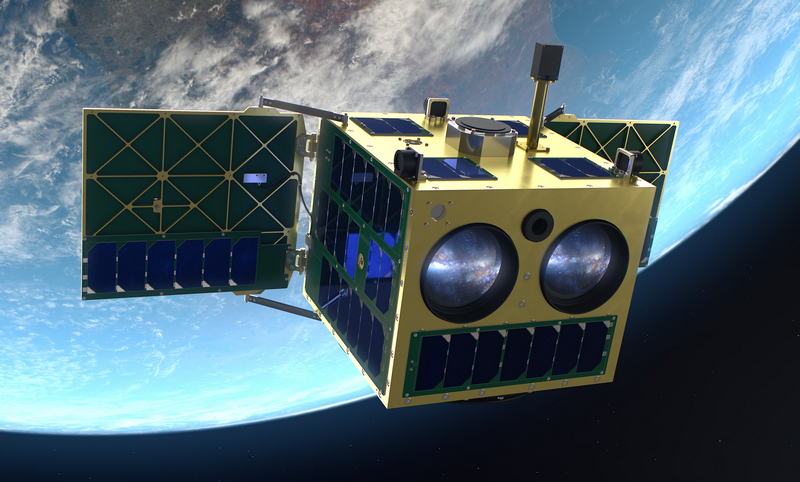UVSat, an ultraviolet astronomical satellite, could be ready for launch in just three years. With a target mass of 40 kilograms, the satellite will be five times heavier than LEM and HEWELIUSZ, two previous Polish scientific satellites. The satellite is expected to remain operational for around five years and, over this period, will supply data to both Polish and foreign astronomers. It is poised to become the most important tool in the arsenal of Polish observational astronomy in the 2020s. For Creotech Instruments S.A., UVSat marks yet another step in its effort to deliver HyperSat, the company’s proprietary microsatellite platform.
On 29 August 2021, Creotech Instruments S.A., the Space Research Center of the Polish Academy of Sciences (PAN) and the Nicolaus Copernicus Astronomical Center signed a consortium agreement to develop project documentation, as well as to construct, launch and operate a Polish satellite system for ultraviolet (UV) observations.
Dubbed UVSat, the concept for the satellite first emerged five years ago with the first space mission studies. It will enable the Polish astronomical community to carry out an independent, national space mission with a high research potential. The satellite will observe the Galaxy in the ultraviolet spectrum, thus facilitating the detailed study of variable stars and other objects such as exoplanets and phenomena related to black holes.
In early 2020, the UVSat mission concept received a positive recommendation from the advisory team appointed by the Minister of Science and Higher Education, thus earning its spot on the Polish Roadmap of Research Infrastructure (comprising 70 projects from various fields, with UVSat as the only satellite). In July 2021, the Polish Space Agency launched public consultations for its National Space Program, which lists the construction of a microsatellite for scientific purposes as one of its activities.
The consortium aims to create a framework for implementing the UVSat mission, which stands to receive funding under the National Space Program. Its participants defined a clear division of competencies in the planned project: the Nicolaus Copernicus Astronomical Center is responsible for the scientific part of the project, the Space Research Center of the Polish Academy of Sciences for the development and manufacture of scientific instruments for the satellite, and Creotech Instruments S.A. for providing the satellite platform. UVSat will be compatible with the HyperSat standard the company has been developing for four years.
However, Creotech’s ambitions go much further:
“Over the next decade, the number of satellites orbiting the Earth will skyrocket. By 2025, over 10,000 of them are expected to operate within dozens of satellite constellations. The majority of those will be micro-class satellites with a mass not exceeding several dozen kilograms,” said Grzegorz Brona, president of Creotech Instruments S.A.

 Subscribe to receive latest news:
Subscribe to receive latest news: